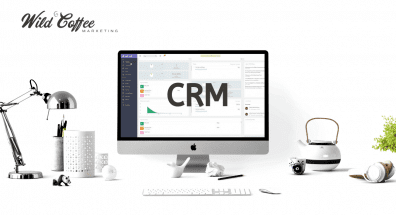Analytics is often seen as the strongest component of digital marketing. Data and statistics tell us where we are, where we need to shift and how to overtake the competition.
Google Analytics is the most popular tool businesses, and marketers use to ascertain how visitors use a website. More than 85 percent of current websites are using Google Analytics. It’s free, robust, and works well with other measurement tools within the marketing field.
But, it’s changing.
Throughout the years, there have been multiple versions of Google Analytics, or GA, but this newest iteration is receiving much more attention. First, this is because it has been built from the ground up. It isn’t just an update; it’s a redo – and most marketers would agree that this was needed. It’s been ten years running the current version of Google’s Universal Analytics, so this feels like a big overwhelming switch for many people. But think back to 2012. A lot has changed, so a true overhaul should be expected, not feared.
Data Collection
As consumers increasingly work, play, shop and do business online, privacy has become an area of significant impact and concern. A recent survey of over 10,000 adults in the U.S. and nine other countries found that over two-thirds are more alarmed than ever about their online privacy. And this isn’t just about cyber criminals. Some 40 percent were worried that their personal information would be sold to third parties and used without their consent.
GA4 was built for a cookieless world. People are focused on their privacy and want to protect their personal information. But as marketers, we need data. GA4 fills data gaps in a privacy-safe way driven by predictive, analytics-focused data collection that can anticipate future growth and provide reporting.
Greater Mobile Integration
This new upgrade also considers the sheer amount of mobile use. In 2012, when Universal Analytics was rolled out, it was the same year that Facebook became a mainstay feature, and we declared MySpace dead. It was also right around the time that Netflix started streaming. Now in 2022, consumers are no longer tied to their computers. They search in real-time on mobile devices. As marketers, GA4 will help us stay ahead of this ever-growing trend.
In fact, with GA4, mobile, app, and website usage are all tied together for unified reporting and analysis. This improvement gives us tremendous insight into consumer activity and habits, helping to create marketing campaigns and tools that meet our end-users right where they are.
Managing Deadlines
GA4 has rolled out slowly over the last year, but there is a lot of chatter about it now. Why? Because it’s going to become standard. GA4 is in the permeation phase, but on July 1, 2023, it will become mandatory – this is when all standard Universal Analytics will stop processing hits. From here, all new information will only be entering established GA4 accounts. Past Universal Analytics reports will be available for up to six months after July 2023, but not any further.
At Wild Coffee, we’re switching our clients over now to avoid issues and allow us to continue capturing and comparing month-over-month data to build client campaigns thoughtfully. Because of the overwhelming reconfiguration from Universal Analytics to GA4, sessions measure differently, skewing comparable data such as bounce rates, goals and events. Changing now allows us to have comparative month-over-month comparisons for an entire year. This time will also allow us to learn new reporting systems and not impact the cost of our clients’ businesses later.
GA4’s enhanced measurement options will enable us to track all page views, scrolls, external site searches, video plays and file downloads. This, coupled with the predictive Google Signals, gives vital insight into user demographics and interests, allowing us as marketers to track users across different devices and platforms more accurately.
Additionally, we have enabled an integration with BigQuery within GA4 for all our clients. This step will allow us to continue to provide year-over-year metrics to track growth and unveil the long-term trends that will impact our marketing practices.
Now to the good part: If you’re a Wild Coffee client, you don’t have to worry about all of this one bit. The bottom line? We’ve got you covered, as always, and will continue to deliver the robust analytics needed to make the marketing decisions that improve your business.
If you aren’t currently a client with Wild Coffee Marketing, why not? We’ve always got new ideas percolating and would love to get geeky and talk to you about your marketing analytics. Contact us today to learn more!









